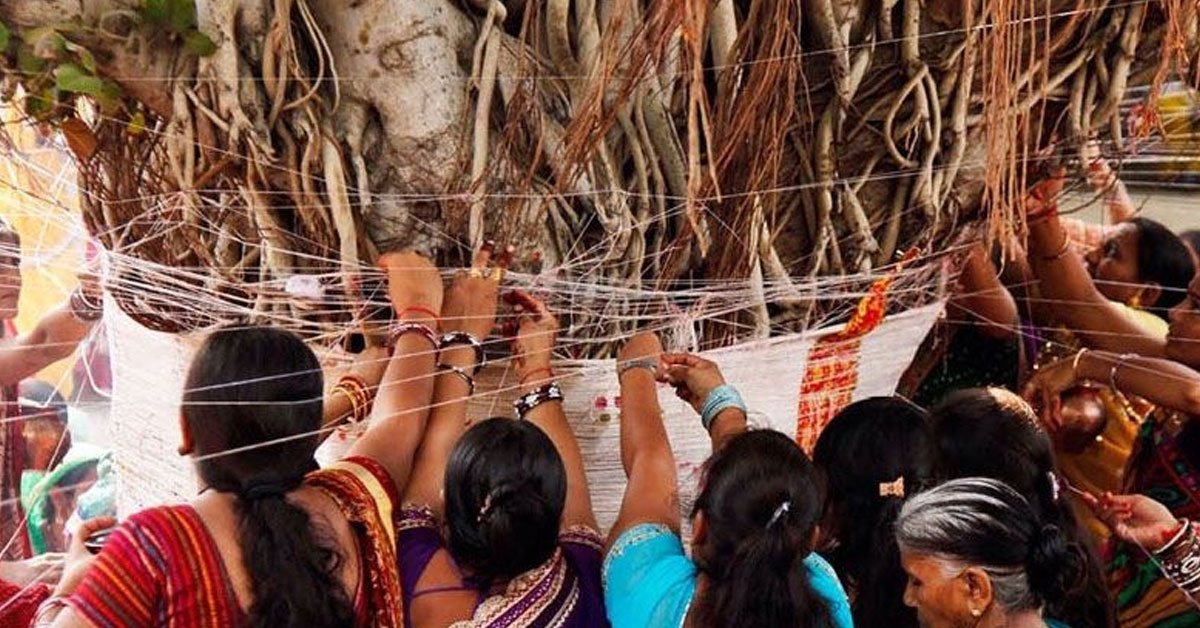Nature gives us vital resources which are crucial for human and existence. Things like plants, flowers, water, air, animals etc play an important role in our lives and support our existence in direct or indirect manner. In Hinduism we consider almost everything sacred which is given by nature. Let’s know more about religious trees & their significance in Hinduism.
Talking about trees and plants, we often grow and worship them in our home like Tulsi, Neem etc which also provide medicinal value for our daily lives.
In Hinduism various trees are associated with Gods and Goddesses and are worshipped accordingly with religious beliefs. Here we are listing some of the sacred trees which are commonly worshiped by Hindu population of India.
1. Peepal Tree –
One of the most sacred trees in Hinduism. Peepal is the tree which is worshiped throughout India. This tree has also a great significance for Buddhist as Lord Buddha gained knowledge and wisdom under Peepal tree.
This tree is huge with deep roots with additional branches that hangs down from the tree. The life of Peepal tree is very long and it grows bigger as the time passes. In Hinduism Peepal tree is associated with Lord Vishnu. Red thread or cloth are tied around the trunk of this tree and cutting is considered to be very auspicious.
2. Banana Tree –
This tree has a lot of significance in the daily lives of people in India. In Northern India ladies use to worship banana tree every Thursday and offer prasad to the tree along with holy water. offerings made to Lord Vishnu and Goddess Lakshmi are usually made on banana leaf.
In Southern India, many people use banana leaves instead of plates for eating food. In many puja like Satyanarayan etc, banana leaves are used. They are also used at the entrance of gates and are considered very auspicious.
3. Neem Tree –
Neem tree has a vast medicinal value and is easily found throughout India irrespective of climatic conditions. This tree is considered as the express of Goddess Durga. The fully grown Neem tree is tall and huge with big trunk and branches.
The shadow of this Neem tree is very dark and provides reliefs from scorching heat of the Lord Sun. The medicinal value works wonders and major diseases like pox etc are cured easily with Neem leaves.
In Ayurvedic field, Neem has a special place and is used in many forms like juices, raw dried leaves powder, juice extracts in toothpastes etc. It has a fruit called “Neebori” which is very sweet when fully ripe.
4. Mango Tree –
Mango is the fruit which is loved by all in many countries and especially India. In Hinduism Mango trees has importance significance. The leaves and small small wood picks are considered very auspicious and are used in Havans and various Pujas.
Mango leaves are usually tied around Kalash during kalash puja which is dedicated to Lord Vishnu. Some people tie Mango leaves at the gate of their homes as it is believed to bring good luck and prosperity.
5. Coconut Tree –
Coconut is the inseparable part of any puja in Hinduism. In southern India you will find a coconut tree in almost every home.
Coconut tree and fruit is a true gift of God and every bit of it is used for various purposes. Coconut is an expression of Goddess lakshmi. Coconut water ha many health benefits and is specially recommended for patients.
6. Bel Tree –
Bel is a type of fruit which is normally found in Northern India. Bel tree and fruit is considered to be very dear to Lord Shiva. The leaves and the fruit are offered in Shiva temples and is easily available. people normally take bel as prasad and keep in their home mandir.
It is very auspicious and worshiping Lord Shiva without Bel fruit and leaves is incomplete. On the occasion of Shivratri lot of Bel is available in the market and devotees can easily and special ornaments are made of Bel fruit to offer to Shivlinga.
7. Ashoka Tree –
Ashoka tree has a very respected place in Hinduism. It is also known as sorrow-less tree as Ashoka means no sorrows. The tree is associated with the God of love.
Ashoka tree is found in the entire India irrespective of climatic conditions. Its deep green leaves and Red flowers makes a great colorful combination. There are many types of Ashoka tree like False Ashoka which is easily grown and found in household now a days. being considered as the symbol of Kamdev, Ravana also kept Sita Mata in Ashok Vatika in his kingdom.
There are many other sacred trees which have a place in Hinduism. As said Hinduism is culturally very rich religion and if followed properly helps in attaining inner peace and enlightenment. I hope this article has helped you a lot to know religious trees & their significance in Hinduism.

